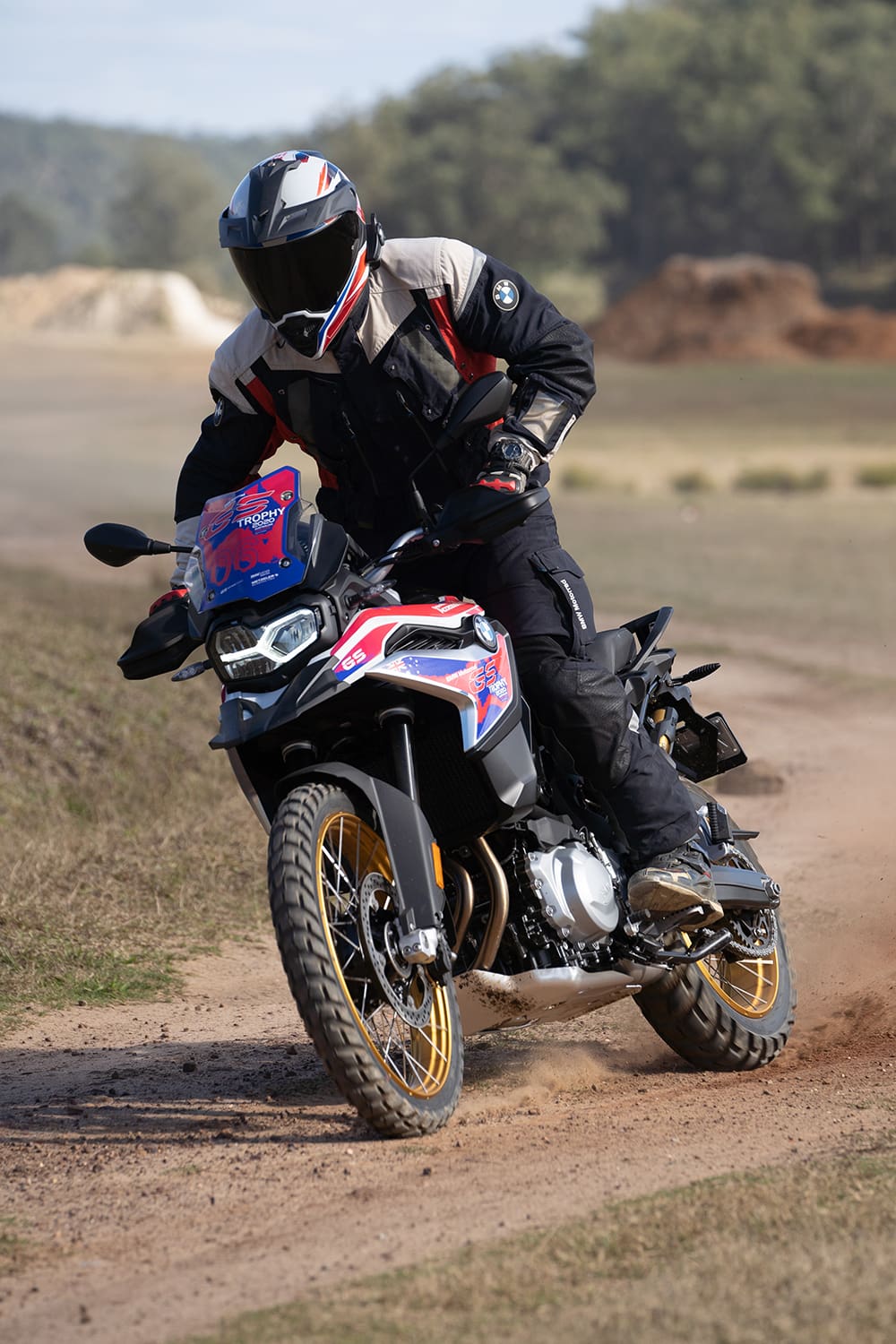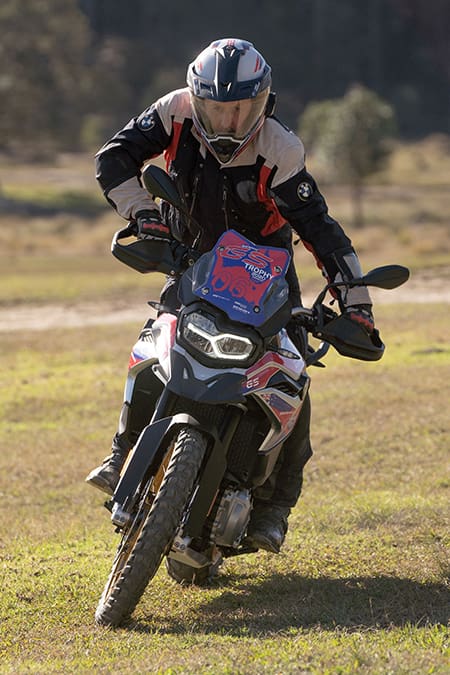The blokes who teach adventure riding reveal the 10 most commonly made mistakes and how to right them
Going into our ninth year now of running GS Off Road Training program, we have witnessed first hand the adventure riding boom and have had over 1000 adventure riders attend our courses in that time. With many of them very new to riding off road, we have learned what are some of the common issues that riders struggle with. While there is so much to learn about riding off road, we put together 10 top tips to help your adventure riding, spread across some vital aspects of riding and preparation. Hopefully you find some or all of them helpful next time you head out on your adventure bike.
1
Pretend you’re Pedrosa
Something we hear riders frequently discussing at our courses is seat height and the need to be able to reach the ground easily with both feet. While we understand the relative comfort that comes from knowing you can reach the ground easily with both feet, it actually shouldn’t be a major factor when choosing a bike. The common ‘landing gear out’ technique, where both feet hang down off the footpegs as a rider rolls to a stop, then letting the bike lean until one foot touches the ground, isn’t very effective, especially on uneven surfaces. Lose your seat height worries by sliding your butt off one side of the seat as you slow to a stop, placing just the one foot on the ground. This will allow you to reach the ground with relative ease and you will also be able to keep the bike upright, which means it doesn’t get heavy from lean angle. This technique gives you greater control and will allow you to reach the ground even when there is a slight hole or dip in the surface underneath you. No more red-faced stop and drop.
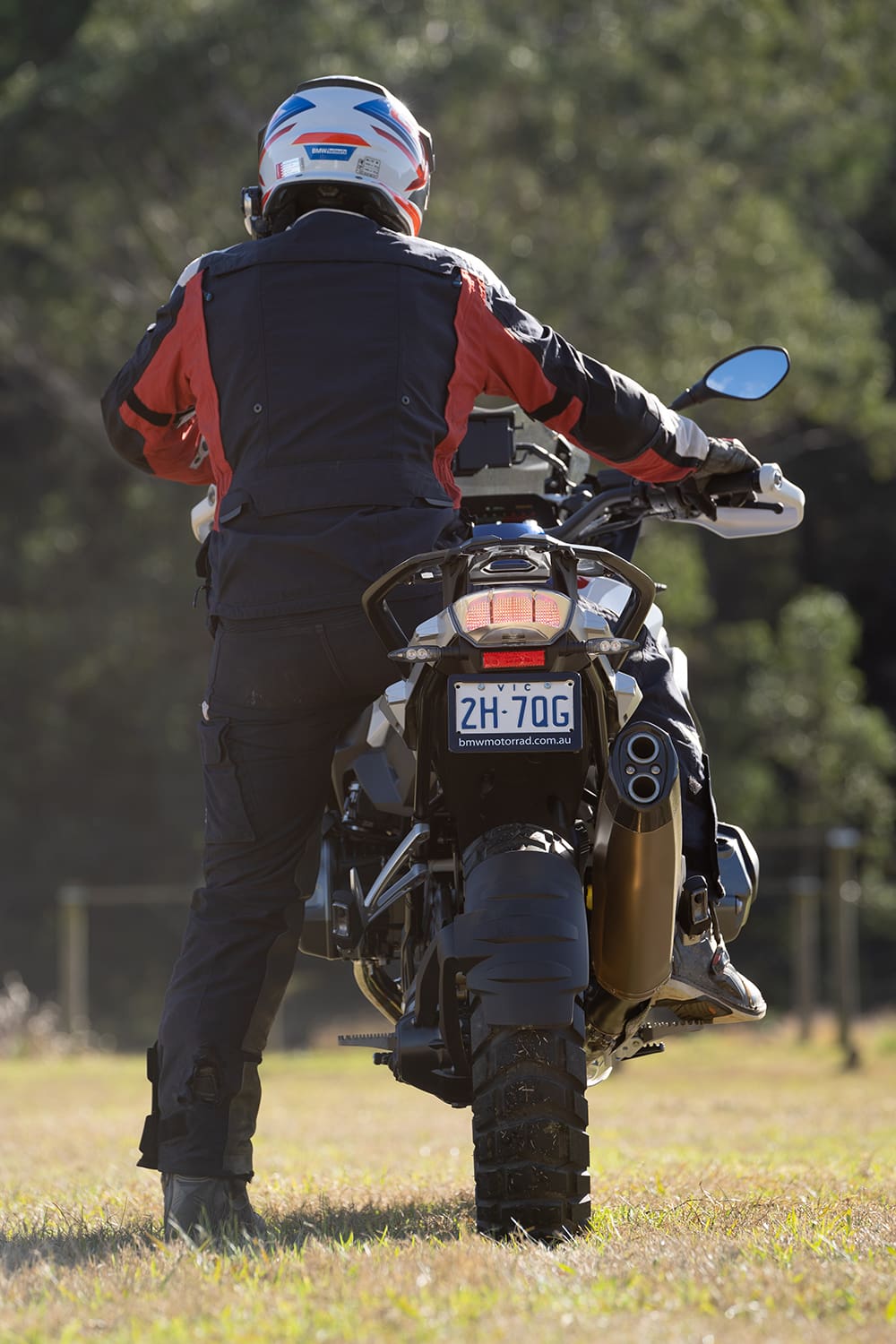
2
Four eyes
Being able to see clearly is an obvious must. Adventure riding will have you dealing with every conceivable condition at some point and the most is dust. Most riders will have chosen an adventure-style helmet, which looks like a dirtbike helmet, but has a road-style visor to keep out the wind on the long hauls. One thing a visor doesn’t do though is keep dust out of your eyes. So, the solution to this is to wear goggles and then close your visor over the top. This will work better on some helmets than others but keep it in mind if you’re making a new purchase. We like to run clear lens goggles with a tinted visor on your helmet; that way you can go from tinted to clear by simply lifting your visor. That’s great when you are off-road and get into tracks with lots of shadows or filtered light. A Pinlock-equipped visor prevents fogging, too. One last tip is to carry something to clean your goggles and visor throughout the day; this could be a dedicated cleaner or just using your neck buff.

3
Master the clutch
Adventure riding will eventually lead you into some technical terrain or conditions, whether it was planned or not. The more technical the slower you generally need to go, the slower you need to go the better you need to be with your clutch. In addition to slow riding, climbing hills off road will require a balancing act of delivering power to the rear while maintaining traction and again, clutch control is key. So many riders come from a road background where you don’t really spend too much time slipping the clutch in slow-speed riding scenarios, other than maybe in your driveway or a car park. Off-road is different, and if you want control of your bike at speeds of less than about 15km/h, then using the clutch is the only way you’ll avoid stalling. This is the speed zone where you need to be good at working the throttle and clutch together to be able to avoid stalling and maintain control. Tight turns, single track and technical hills all require this. A high level of clutch and throttle control will change your adventure riding.

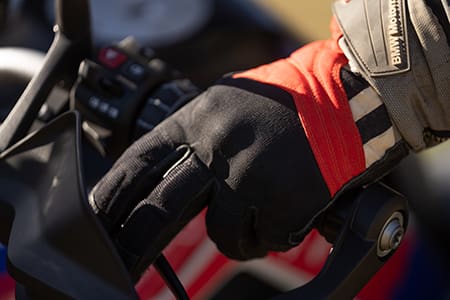
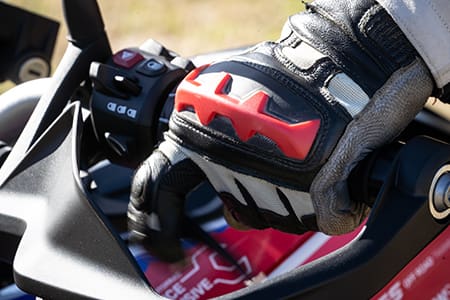
4
Less is more
Picking the right line on any motorcycle is important, but on an adventure bike when the terrain becomes technical, a good line choice is critical. A fallen bike that weighs over 200kg in awkward terrain not only has a high risk of damage, but will zap your much-needed energy to get it righted. When you’re looking for a good line through a section, remember you only need a tyre width to make it work, keeping in mind footpeg and frame clearance, but most of the time that isn’t an issue. Look for the smoothest way through that minimises riding over loose terrain. That means avoiding loose rocks, leaf litter, and anything else that will make it easier for the rear wheel to lose traction. In dry conditions, don’t be scared of bigger rocks that are embedded in the ground; they actually offer pretty good grip. Another good tip is to stop and have a look through tricky sections, even walk it, that’s often the difference between a clean ride and a costly crash. Get creative, most of the time the best line isn’t the worn-in one. Make sure you keep your vision up and scan the terrain too. You can only pick good lines if you see them.

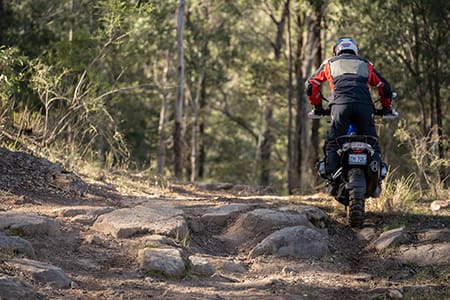
5
Nerd up
Electronics are a part of life on all modern adventure bikes. Love it or hate they are here to stay and you are well served to gain a thorough understanding of what they do and how they work. Aides like ABS, traction control and electronic suspension adjustment will enhance your riding no end if you understand them and use them correctly. Gone are the days of being hardcore and switching it all off, they are a highly effective safety net. Specific modes for specific conditions work very well and can adjust things like throttle sensitivity, ABS setting, traction-control settings and suspension adjustment. There are times to deactivate some settings also, traction control in sand, for example, where the rear wheel will need to spin to keep the bike driving. Just be sure to take the time to learn how it all works, it’s absolutely worth it.
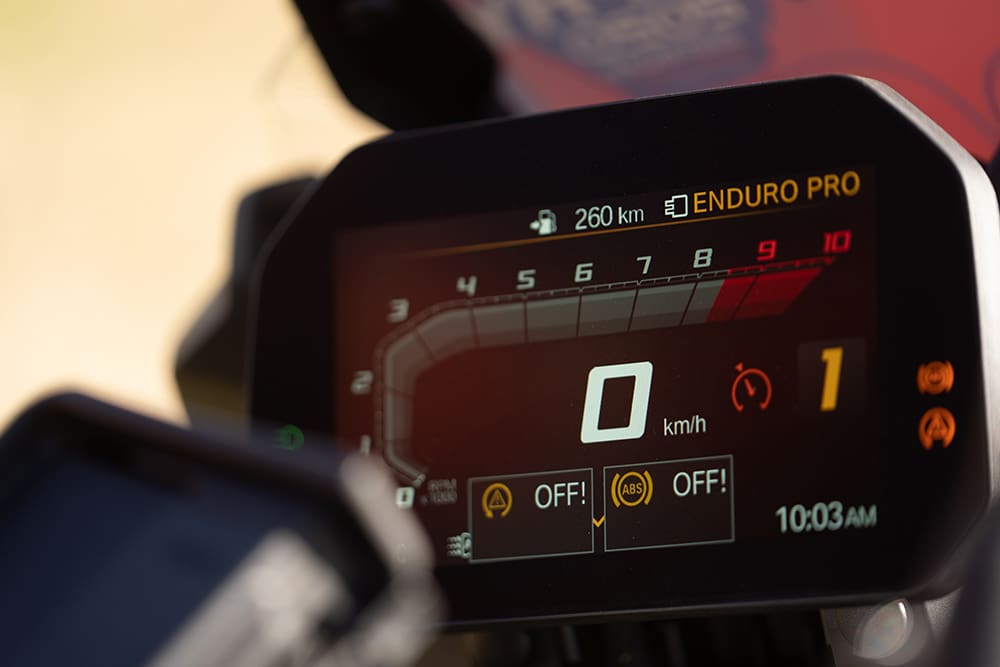
6
Don’t be a lego figure
Most riders that come to our courses know that off-road you need to stand up sometimes. But standing on the bike is more than just getting your butt off the seat because it’s a little rough. Without going into a full standing-position lesson, one thing you should know and work on is opening up full range of movement on the bike. Most riders stand up and stay static while they ride, looking like a Lego figure clipped onto the bike. This will make some situations difficult and will also wear you out. You need to be able to work with the bike, knees and elbows need to be ready to bend and become suspension when needed. You need to be able to lean forward and back at the right times, side to side, too. Get comfortable being fluid on the bike, you will save energy and enjoy your off-road riding that much more.

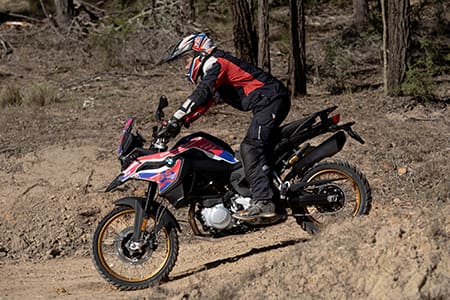
7
Good gear
Plenty of adventure riding gear is made for extreme conditions, mostly of the cold end of the scale. There is always an emphasis on liners and waterproofing, which is great when the conditions require it. But here in Australia and New Zealand we also ride in the heat quite a bit, too, make sure you consider that. We see lots of riders overheating at our courses and sometimes their suits don’t have any venting. Don’t underestimate how much hotter you’ll get on a technical dirt road or bush trail. A great adventure suit will have plenty of vents, plus a removable thermal layer; it needs to be adaptable, it’s what adventure riding is all about. If it’s really cold, we just run a thermal base layer. It’s also a great idea to have two glove options, we always have our regular gloves and a cold weather set with us.

8
Torque, not revs
Logs require you to have good awareness of your bikes ground clearance as that will be a factor when choosing how to get your adventure bike over a log. You don’t want the bike to belly out hard onto a log, it’s not good for anything; just skimming the skidplate as you ride over is okay, but anything harder is dangerous. An adventure bike isn’t a 100kg enduro bike, so you’ll need some momentum. Firstly, ride at the log square on, as close to a 90-degree approach as you can. Depending on the size of the log, you can either pull the clutch in before the front wheel rolls over the log, or use a little blip of throttle – not to wheelie, just to unweight the front end as the wheel rolls over – and then pull the clutch in and let the rear wheel roll over the log. This is the safest and most consistent way to get over small to medium sized logs. If the log is big enough that your bike will become a see-saw, then you need to consider another way to get over it. Lifting the bike with help of other riders is a safe way to do it or collect some smaller branches or logs, even some rocks, and make a ramp up the face of the log to help the bike over. Most of the time you won’t need a ramp on both sides, just the approach. Make a considered call when it comes to logs, they can easily end your day if you get it wrong.
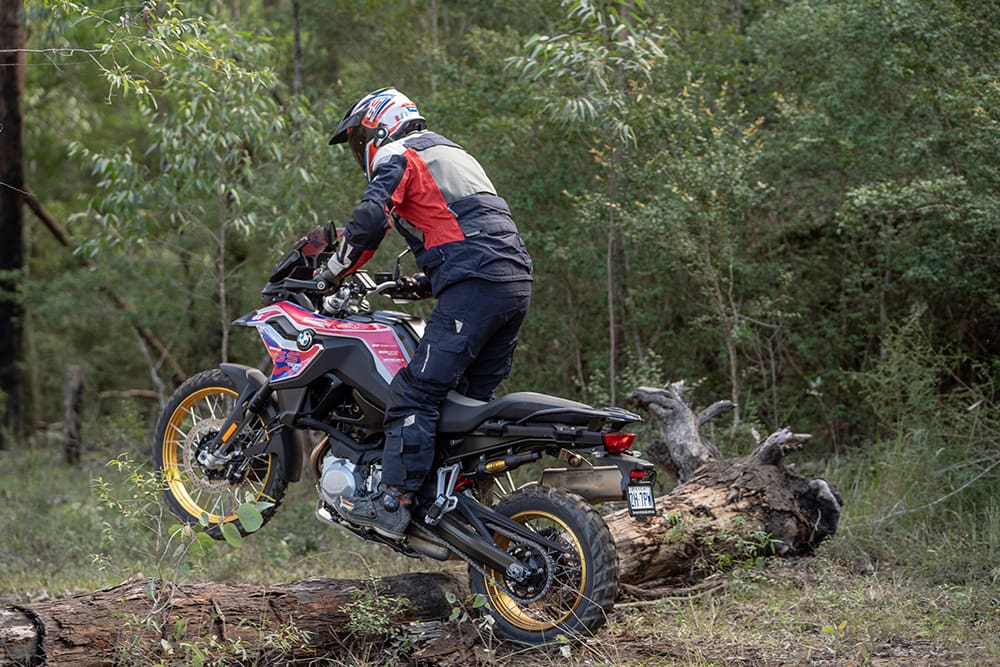
9
Hill recovery
This is a must-have skill if you are heading off road on an adventure bike, it will also increase your confidence when riding hills, too. This is about staying in control and knowing you’ll be fine if you don’t feel you can make it to the top of a steep climb. You need to stop the bike by choice, not ride till you’re stuck, and then stop the engine by stalling it in gear. It will then sit on the hill using engine compression, freeing up your brake hand. Have a look over each shoulder and pick a direction you are going to reverse the bike. Once you’ve chosen a side, slide off the bike in that direction and get a good solid foot on the ground. Turn the steering to full lock and slip the clutch to slowly roll the bike backwards, engine is still off. Once the bike gets sideways on the hill it won’t reverse any further. Now release the clutch again and turn the handlebars from lock-to-lock, walking the front wheel down the hill. Once you can point the front wheel down the hill, apply the front brake, pull the clutch in and when you are ready ease the brake off and roll back down the hill.+
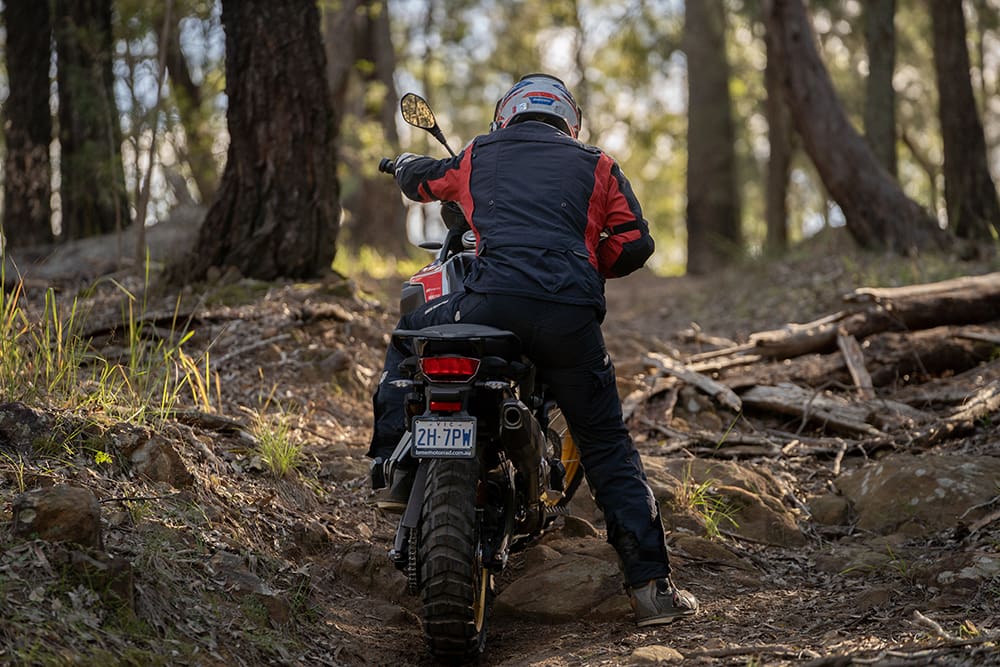


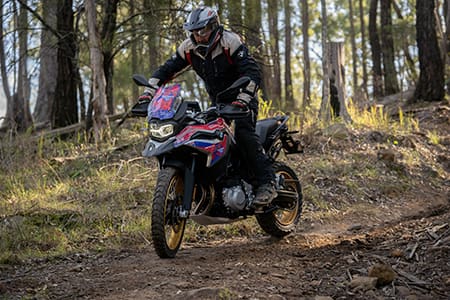
10
Get around
Corners are by far the most common place riders make mistakes on adventure bikes. You have to process a lot every time you approach a turn, especially off road. The radius of the corner, how much traction there is, the camber and your speed just to name a few. The best tip we can give you is get your speed down well before the turn. You will have so much more fun if you can roll the throttle on early and through the exit rather than having to brake all the way to the apex, or further, trying not to end up in the bushes. Get used to a steady in, throttle out approach to cornering on these bikes and you’re almost there. If you can open the throttle early, the bike will balance out and you can steer it through the turn much easier. When the surface is loose and you go in too hot, you will have too much load on the front tyre and you’ll struggle to turn. Being in the standing position when you are off road helps and that also allows you to weight the outside foot peg which is critical. Always remember to stay left on the road or track, regardless of how remote you think you are, and look well ahead.
